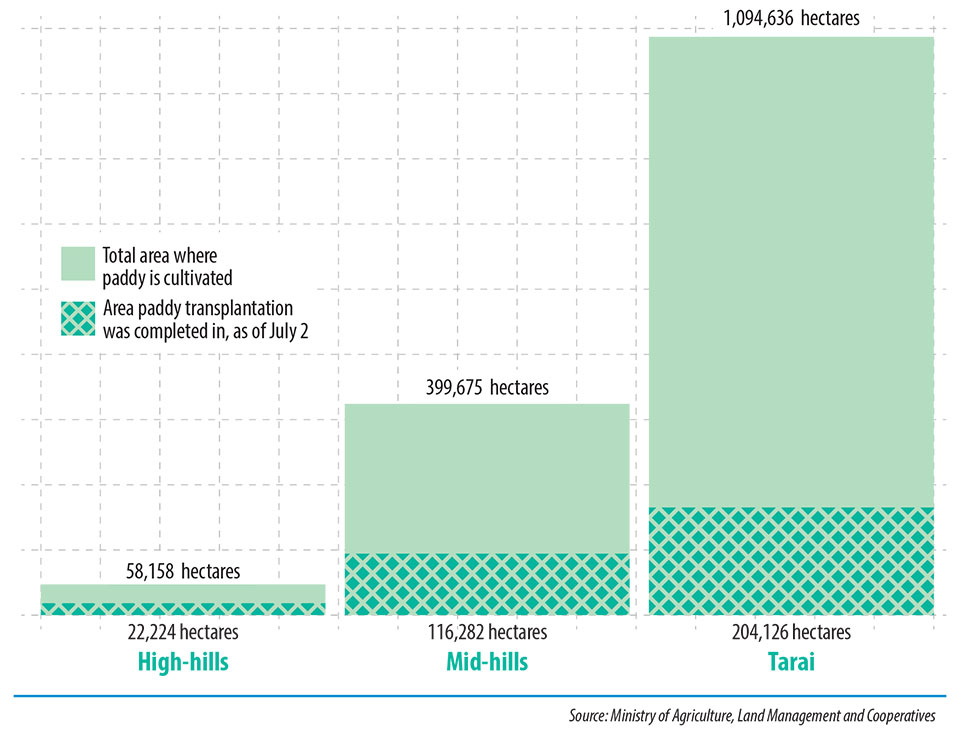KATHMANDU, June 28: Paddy plantation area is expected to decline this year as farmers opt for cash crop rather than traditional farming.
According to government data, paddy plantation this year is expected to shrink to 1,395,207 hectares of land across the country, down from 1,438,989 hectares during last year.
The Department of Agriculture (DoA) in its preliminary study has projected that the land use for paddy plantation will shrink by 3.04 percent during the rainy season this year. Last year too, the paddy plantation area had reduced by 10,000 hectares compared to the previous year.
Prakash Kumar Sanjel, director general of the DoA, said farmers are being diverted from paddy production due to low earnings from the yield compared to other agriculture products. “Mainly, farmers are switching to other cash crops than paddy production,” he added.
Irregular rainfall likely to take a toll on this year’s paddy h...

The DoA records show Madhesh Province is expected to cultivate paddy on 383,150 hectares of land, the largest in terms of plantation area in the country followed by Lumbini Province which is expected to use 302,889 hectares of land for production of the essential food. Koshi Province is expected to plant paddy on 276,386 hectares, while this figure will be only 41,904 hectares in Karnali Province, the least of all.
The decline in paddy plantation area suggests that the country will not be able to self-sustain production of the staple food. According to government records, Nepal produced more than 5.724 million tons of paddy last year.
With the shortfall in its production, Nepal’s import of rice has been increasing almost every year. The records with the Department of Customs show that the agrarian country imported rice and paddy worth Rs 35.53 billion in the first 10 months of the current fiscal year.
Out of the total import, Nepal spent Rs 15.76 billion to purchase 201,916 tons of rice. Similarly, Rs 19.77 billion was spent to purchase 496,989 tons of paddy from abroad. This included 1,850 tons of paddy seeds worth Rs 818.20 million.
Citing a decline in farmers’ interest to produce paddy in the rainy season, the government has been facilitating production of spring paddy (Chaite dhan), which relies on irrigation facilities and yields more. Sanjel said spring paddy is being produced on 110,000 hectares of land across the country. “If the land use for this purpose is doubled, it will largely help to meet the demand of the domestic market,” said Sanjel.
Meanwhile, 12.33 percent of paddy plantation for this monsoon season is completed across the country as of Friday. According to the DoA, 45.49 percent of the plantation has been done in Sudurpashchim Province, the largest of all.
Bagmati Province has witnessed 20.53 percent of its rice field plantations, while Karnali Province has accomplished plantations in 20.11 percent of designated land areas. The figure is 13.79 percent in Gandaki Province, 9.66 percent in Lumbini Province and 5.96 percent in Koshi Province.



































